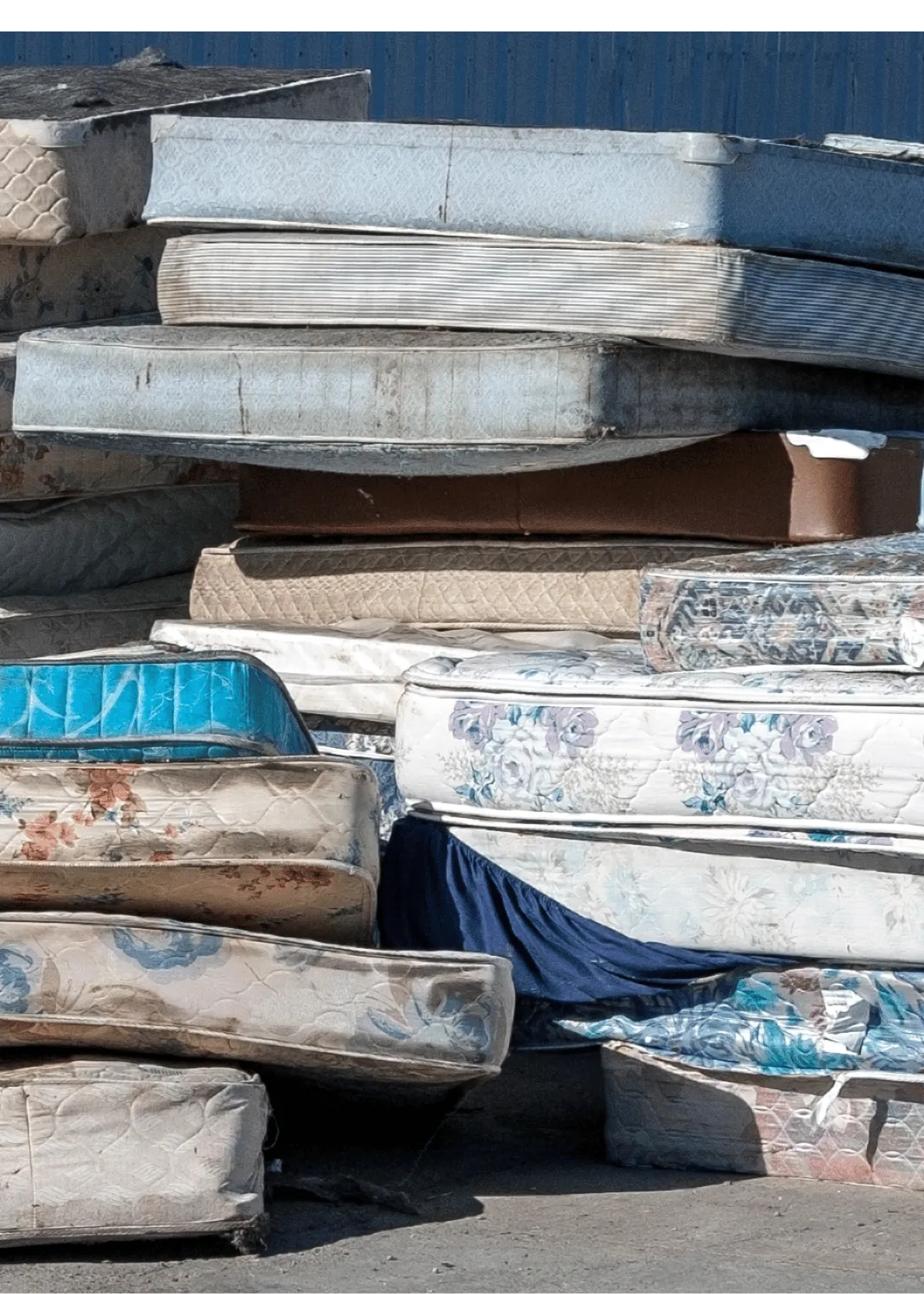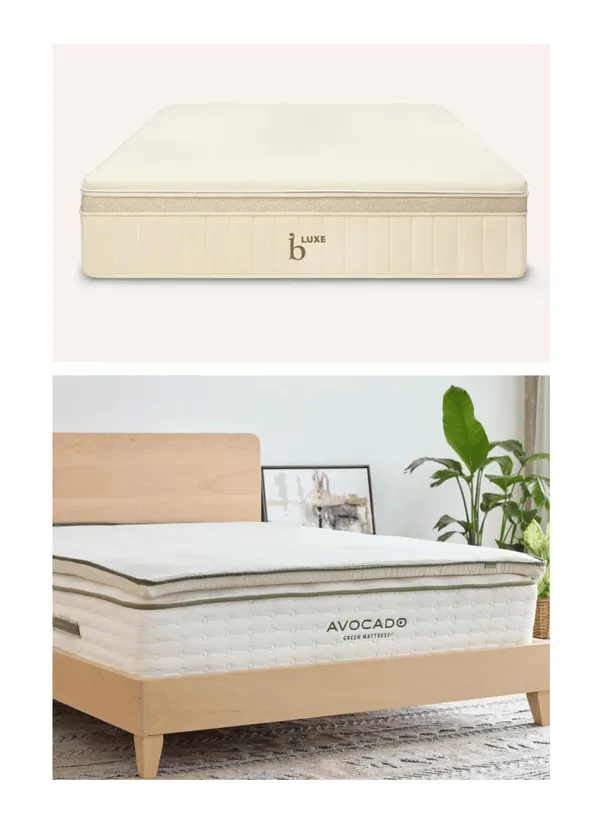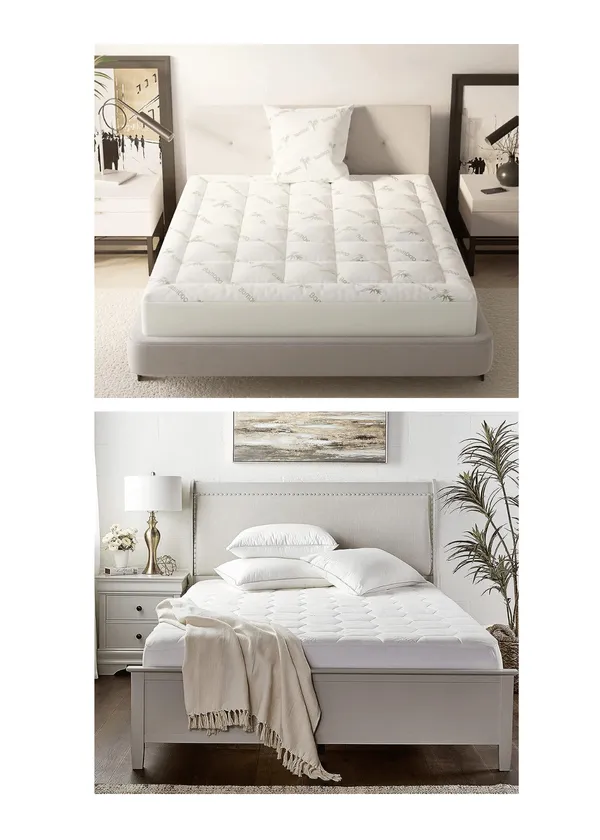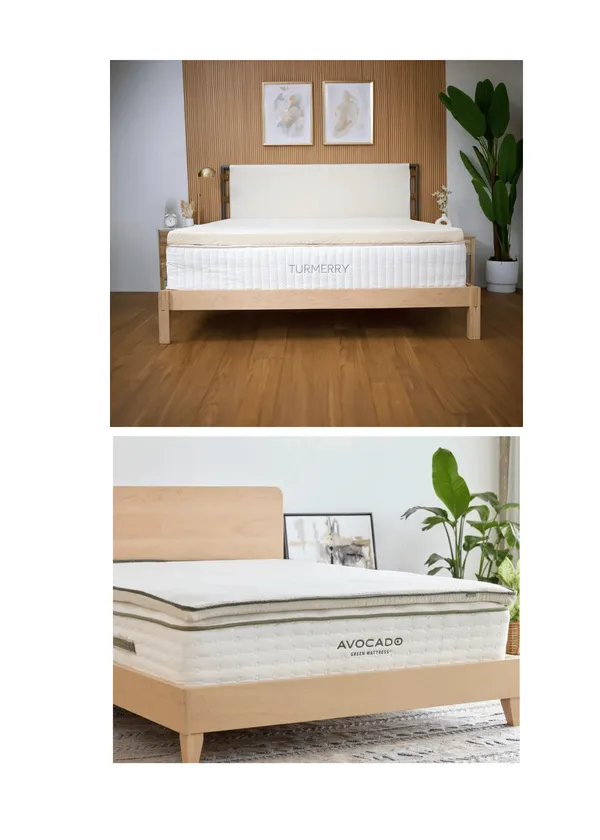(Last Update: 05/05/2024)
OUR KEY TAKEAWAYS:
- Waste from mattresses is a growing concern with negative environmental and economic impacts.
- Adopting sustainable disposal methods, such as donating and repurposing mattresses and utilizing recycling facilities & programs, can reduce junkyard overflow while creating jobs.
- Supporting initiatives like EPR legislation & local recycling facilities will create a more sustainable future for our planet.
Did you know that most mattresses end up in landfills, taking up to 120 years to decompose?
This alarming fact has led to a growing concern about mattress waste and its impact on our planet. Fortunately, there are greener alternatives for mattress removal that help the environment and bring economic benefits to communities.
In this blog post, we will explore the best sustainable practices of mattress disposals for a greener planet, discuss the importance of adopting sustainable methods, and inspire you to make informed choices when buying a new mattress.
By the end of this blog post, you will better understand the environmental and economic impact of waste from mattresses and how you can be part of the solution. So, let's dive into mattress waste recycling and disposal and unveil the secrets to a greener planet!
The Growing Concern of Waste of Mattress
Waste from mattresses is a growing concern primarily due to junkyard overflow, environmental impact, and economic strain on communities.
With an estimated 20 million mattresses ending up in landfills each year in the United States alone, the pressure on our planet and its resources is immense.
In a time when eco-friendly practices are becoming increasingly important, we must consider better ways to recycle and discard our old beds. The truth is that many mattresses are made from different materials that can significantly impact the environment.
When old mattresses are not recycled or thrown away, they take up valuable landfill space, contribute to greenhouse gas emissions, and place an economic burden on communities due to the rising waste management costs.
In the following sections, we will explore sustainable mattress removal services that can help reduce these negative impacts.
Landfill Overflow and Environmental Change
When mattresses end up in landfills, they undergo anaerobic decomposition, producing methane gas, a 23 times more potent greenhouse gas than carbon dioxide. This contributes to the alarming increase in global warming.
In addition, most beds can decompose for up to 120 years, occupying valuable junkyard space for an extended period. Imagine the impact on our environment if we discard our mattresses irresponsibly.
Fortunately for mattress manufacturers, there are examples of positive change. For example, in 2016, Connecticut recycled approximately 130,000 mattresses.
This reduced 4.2 million kg of carbon dioxide equivalent emissions, saving 48,7 million megajoules (MJ) of fuel energy and almost $1.5 million for municipalities. This demonstrates the environmental benefits of adopting sustainable disposal and recycling methods. The next section will discuss the economic strain on communities due to improper mattress disposal fees.

A Landfield with a Digger
(Credit: Canva)
Economic Strain on Communities
The improper disposal of household items and mattresses harms the environment and financially burdens communities. As a result, landfills are becoming increasingly scarce, and debris management costs continue to rise.
States like Connecticut and Rhode Island have implemented mattress recycling Extended Producer Responsibility (EPR) policies in response to the restricted availability of landfill space and rising disposal costs of most mattresses.
According to the California Bye Bye Mattress program managed by the Mattress Recycling Council, consumers in California can recycle their old mattresses for free at a participating collection site or recycling facility.
By adopting sustainable mattress disposal methods such as donating, repurposing, and recycling mattresses with bed bugs, we can help reduce the economic strain on communities. These methods not only contribute to a decrease in landfill location and debris but also create job opportunities, benefiting the economy.
The following sections will explore various sustainable disposal methods and their advantages.

A Collection of Waste, Including Mattresses
(Credit: Canva)
Adopting Sustainable Disposal Methods
Several sustainable disposal methods are available to recycle mattresses, including donating, reusing, repurposing, recycling facilities and programs, and supporting a circular economy.
Over three-quarters of a mattress is recyclable, making mattress recycling centers an attractive option for those who responsibly dispose of or recycle their mattresses. The mattress recycling program is the most cost-efficient solution for sustainable disposal.
To ensure minimal environmental change, mattresses with bed bugs must be disposed of using the right disposal and recycled method, and environmental guidelines must be adhered to.
Let’s delve into the details of donating and repurposing donated mattresses and recycling facilities and programs.
Donating and Repurposing
Donating and repurposing old or used mattresses is a viable option for sustainable mattress disposal. Doing so can help reduce landfill overflow, create jobs, and return used mattresses to needy people.
Local charities and national nonprofits, such as Goodwill, Habitat for Humanity, and the Salvation Army, accept mattress donations.
Before donating a mattress, it is important to assess its good condition realistically. For example, the current mattress may not be comfortable after several years. As such, it may not be suitable for donation. Again, recycling is a great option.
Repurposing mattresses can also be an exciting DIY project, turning old kinds of stuff into something new and useful. For example, the foam and plastic scraps of foam from an inflatable mattress can be used for liners or outdoor grill covers. You can also recycle your mattress by donating it to local homeless shelters or listing it on a Facebook marketplace or Craiglist.
The coils and springs inside a mattress are valuable resources that can be melted and crafted into aesthetically pleasing shapes with a modern flair.
In the next section, we will discuss recycling facilities and programs for mattresses.

Piles of Old Mattresses
(Credit: Canva)
Old Mattress Recycling Facilities and Programs
Recycling facilities and programs are crucial in sustainable mattress disposal by encouraging initiatives to accept mattresses. The concept of recycling mattresses has been introduced previously. Popular mattress types, such as foam, innerspring, pillowtop, and hybrid, can all be recycled.
Inflatable mattresses and some box spring, and springs are also recyclable. Mattress recycling facilities can accept mattresses at specialized drop-off locations or nonspecialized mattress recycling centers. Consumers can also utilize Earth 911 to find recycling centers that accept mattresses, box springs, and springs in their area.
The mattress recycling process involves a machine cutting the bed down and peeling away the top layer of foam and fabric to expose the inner material, mostly steel, and metal springs, which are then separated and stored.
People can build a pet bed with an old mattress. Metal bed springs or box springs are either sold as scrap metal or melted down and reused for new, steel springs-based products, while wood framing is chipped and turned into mulch.
By choosing to recycle and reuse your very old bed and mattress, you are contributing to a greener planet and supporting a circular economy.
Supporting a Circular Economy Through Old Mattress Disposal
A circular economy is an innovative system that replaces the linear economy with a model of resource stewardship based on cradle-to-cradle principles.
By adopting sustainable old mattress disposal methods, we can support a circular economy, create jobs, and reduce debris. When buying a new mattress, it is crucial to select sustainable materials and look for a retailer take-back program.
In the following sections, we will discuss the job creation and economic benefits of sustainable mattress disposal and ways to minimize debris and maximize resource stewardship.

An Old Mattress in a Dirty Room
(Credit: Canva)
Disposable Mattress Business Model:
Job Creation, Mattress Recycling Council, and Economic Benefits
Sustainable mattress disposal has several economic advantages, including creating jobs and mattress recycling services. For example, if the statewide mattress recycling council in Texas increases the rate of mattress disposal by 40%, it could generate approximately 6,000 jobs.
The full-time job of an average adult usually requires recycling around 6,000 mattresses every year.
There are quite a number of mattresses to process annually. DR3, the most significant mattress recycling operation in the United States, is an excellent example of how sustainable mattress recycling disposal can create employment opportunities.
By adopting sustainable old mattress disposal methods, we can contribute to the growth of the circular economy, create jobs, and bolster the economy.
The next section will discuss the benefits of minimizing debris and maximizing resource stewardship in a circular economy.

Piles of Old Mattresses on a Street
(Credit: Canva)
Minimizing Waste and Maximizing Resource Stewardship
A circular economy aims to be restorative and regenerative by design, based on designing out debris and pollution, keeping products in use, and regenerating natural systems.
Mattress recycling in a circular economy can result in numerous environmentally-friendly benefits, such as decreased landfill location, conservation of natural resources, and decreased greenhouse gas emissions.
Recycling mattresses can decrease waste sent to landfills, thus allowing for an extended lifespan of existing landfills.
By supporting a circular economy by disposing of mattresses, we can minimize debris, maximize resource stewardship, and create a cleaner, greener future for future generations.
Making Informed Choices When Buying a New Mattress
As we have seen throughout this blog post, how we dispose of our old mattresses significantly impacts our environment and communities.
When it's time to dispose of our old mattress and buy one, it is essential to make informed choices to ensure we contribute to a more sustainable future.
Factors such as comfort, support, durability, and additional cost should be considered when purchasing a mattress.
The following sections discuss the importance of selecting sustainable material when buying a new mattress and the benefits of retailer take-back programs. By making informed choices and considering the environmental impact of our actions, we can make a difference and support a greener planet.
Selecting Sustainable Materials
It is crucial to select organic mattresses made from sustainable materials such as organic cotton, natural latex, wool, hemp, and kapok.
The material is better for the environment and ensures a good quality mattress and a healthier sleeping environment for you and your family.
Look for certifications such as GOTS and OEKO-TEX to ensure the materials are sustainably sourced.
Selecting a mattress made from sustainable materials can contribute to a greener planet and support the principles of a circular economy.

Piles of furniture and Mattresses on the Street
(Credit: Canva)
Retailer Take-Back Programs
Retailer take-back programs are initiatives offered by major retailers or stores specializing in selling mattresses, wherein they provide free hauling and recycling of your old mattress when you purchase a new one.
These programs ensure that your old mattress is disposed of responsibly, saving you time and effort in finding a suitable disposal method and replacement mattress.
When buying a mattress, consider choosing a retailer that offers a take-back mattress recycling program, too. Doing so supports a circular economy and contributes to a cleaner, greener future for future generations.
Advocating for Change and Supporting Green Initiatives
As we have seen throughout this blog post, how we dispose of our mattresses significantly impacts our environment and communities.
Advocating for change and supporting green initiatives is crucial, such as lobbying for extended producer responsibility (EPR) legislation and supporting nonprofit organizations and local mattress recycling centers and facilities.
In the following sections, we will discuss how to lobby for EPR legislation and the benefits of supporting nonprofits, local, and mattress recycling programs and facilities.

Two Old Mattresses on the Street
(Credit: Canva)
Lobbying for Extended Producer Responsibility (EPR) Legislation
Extended Producer Responsibility (EPR) legislation is a policy approach that holds producers accountable for the end-of-life management of their products. Lobbying for EPR legislation is essential to create a more sustainable future for our planet.
To become proficient in EPR legislation, please familiarize yourself with the applicable laws and regulations and engage with stakeholders who can provide support.
By lobbying for EPR legislation, we can help promote a circular economy and create a more sustainable future for future generations. This can lead to new jobs, decreased landfill overflow, and reduced debris.
Supporting Nonprofits and Local Mattress Recycling Facilities
Nonprofit organizations and local mattress recycling facilities are vital in promoting sustainable disposal of mattresses and supporting a circular economy.
You can contribute to these organizations in several ways, such as volunteering at a local recycling facility, making a financial donation, or participating in a fundraising event.
By supporting nonprofits and local recycling facilities, you can help create a more sustainable future for future generations. We can make a difference and contribute to a cleaner, greener planet.

A Pile of Dirty Mattresses
(Credit: Canva)
Summary
Throughout this blog post, we have explored the growing concern about waste from a mattress and its impact on our environment and communities.
We can reduce landfill overflow, create jobs, and support a circular economy by adopting sustainable disposal methods such as donating, repurposing, and mattress recycling.
We have also discussed the importance of making informed choices when buying a new mattress, selecting sustainable materials, and supporting retailer take-back programs.
By advocating for change and supporting green initiatives, such as lobbying for EPR legislation and supporting nonprofits and local recycling facilities, we can contribute to a more sustainable future for future generations.
In conclusion, it is essential to recognize the impact of our actions on the environment and strive for a more sustainable future.
By responsibly disposing of our old mattresses, making informed choices when purchasing a mattress, and supporting green initiatives through mattress donations, we can create a cleaner, greener planet for future generations.
Frequently Asked Questions
What institution manages the Bye Bye Mattress?
The Bye Bye Mattress program is managed by the Mattress Recycling Council (MRC), a nonprofit organization created by the mattress industry to develop and implement statewide mattress recycling programs.
This organization was formed following the passage of laws in California, Connecticut, and Rhode Island. Although the MRC coordinates with state entities like the California Department of Resources Recycling and Recovery (CalRecycle), the MRC directly manages the program.
What is the most eco-friendly method of disposal of waste?
Composting is the most eco-friendly waste disposal method since it produces a nutrient-rich product that can be used as fertilizer for gardens and fields, reducing the need for chemical fertilizers.
Composting is a great way to reduce the amount of debris that goes to landfills. It can also create a nutrient-rich soil amendment that can be used in gardens and fields.
What makes a mattress eco-friendly?
An eco-friendly mattress is free from toxic chemicals because it is made from renewable or recycled materials, has low or reduced emissions in production, and has a very low content of VOCs. These features help reduce sleep and environmental impact, making it the perfect choice new bed for those seeking a more sustainable mattress or sleep on.
How do you dispose of a badly soiled mattress?
Hiring a professional waste removal service is recommended to dispose of your mattress properly or a badly soiled old mattress part. A Waste Disposal Service provides specialized services for mattress hauling, which will ensure in good condition that the used mattress or old mattress part is safely and appropriately disposed of.
How long does it take for a mattress to decompose?
It takes up to 120 years for a mattress to decompose—significantly longer than the average lifespan of a bed and its owner. To avoid contributing to landfills, research disposal and recycling options for pet beds before disposing of your mattress yourself.







